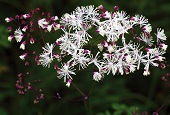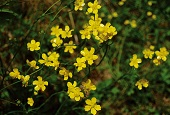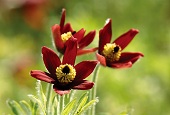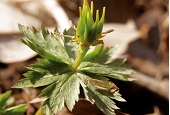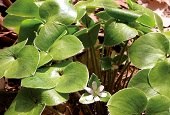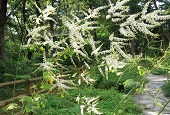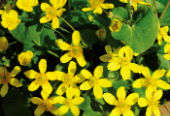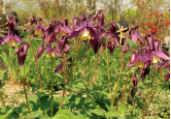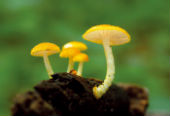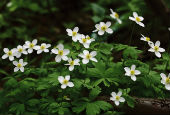View this article in another language
- 한국어
- English
- 日本語
- 中文
- العربية
- Español
- Français
- Deutsch
- Pусский
- Tiếng Việt
- Indonesian
Flora & Fauna of Korea #33
Korea.net publishes a series of articles, “Nature You Meet in the Mountains,” about the peninsula’s mushrooms, insects, trees and herbs & flowers.
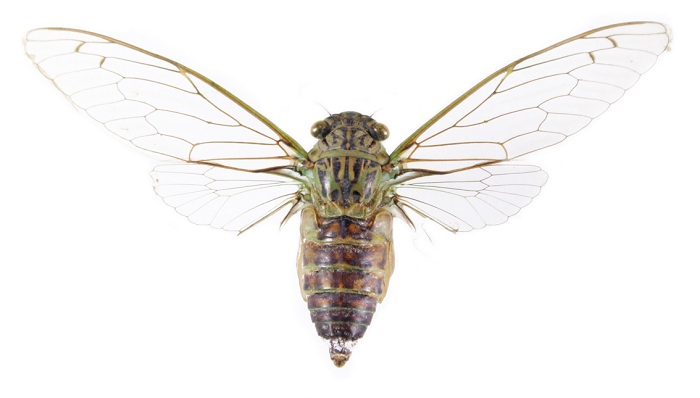
Insects
Name: 애매미, Aemaemi
Scientific name: Meimuna opalifera (Walker)
Distribution: Korea, China, Japan
This cicada is about 28 to 35 millimeters long and has a wingspan of about 40 to 48 millimeters. The back of the body is grayish yellow with some markings in green, reddish brown or black. There are some light green areas that stand out on the head and thorax. The underside of most of this species is light green or yellowish brown.
The male is characterized with a relatively longer stridulatory organ, while the female is more slender and has a longer ovipositor. On some of them, the surface is covered in a white powder. There is W-shaped green pattern on the back of the thorax. Also, on some individuals, a reddish brown pattern appears, too.
Ecology: It is usually found in mountains, below 600 meters of altitude. After generating a long series of buzzing and clicking noises, the males fly away to new locations.
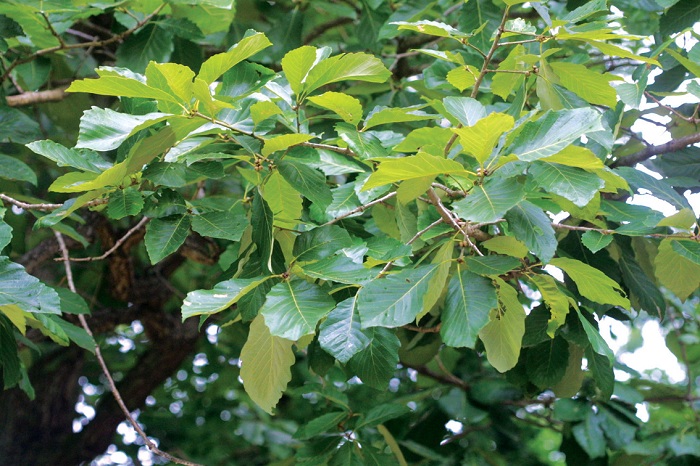
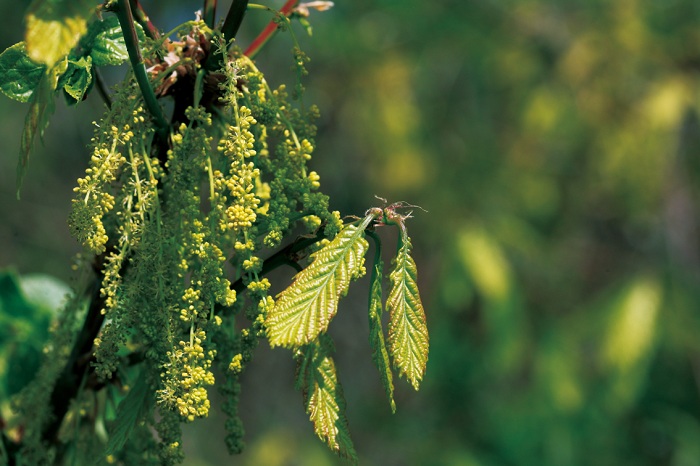
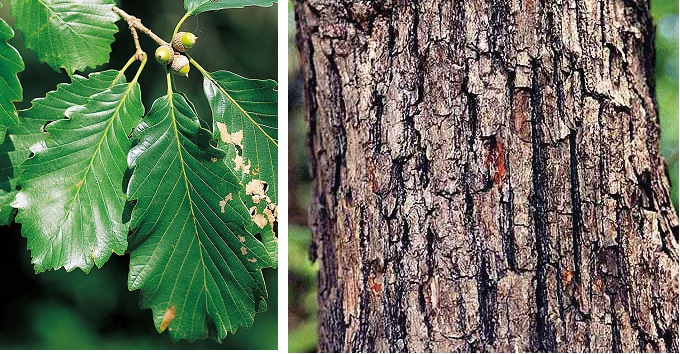
Trees
Name: 갈참나무, Galchamnamu
Scientific name: Quercus aliena Blume
Type: deciduous broadleaf tree
Blooming season: May
Bearing season: October
Distribution: mountains nationwide
This oak tree, known as the Oriental white oak, grows to 25 meters tall and has a trunk about 1 meter in diameter, with fissured rough bark. The leaves are ovate or obovate, and range from being obtuse to acute. The leaves develop a sawtooth edge along the sides. A gray pilus is found on the underside of the leaves. The monoecious flowers have drooping male catkins and upright female catkins. The tree bears oval acorns with some hairs at the tip.
The wood is widely used in Asia for building boats and for the flooring in houses.
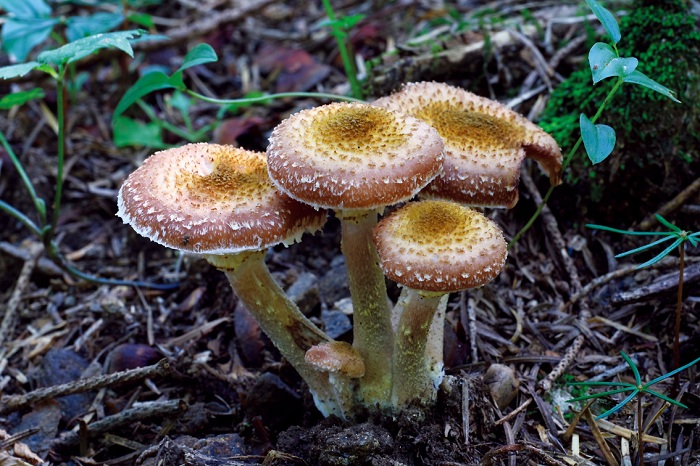
Mushrooms
Name: 뽕나무버섯 Bbongnamu beoseot
Scientific name: Armillaria mellea (Vahl) P. Kumm.
Type: saprophile spore
Print: white
Edible
This fungus is commonly known as the honey fungus. It grows in clusters from the trunks and stumps of both living and dead trees. It has a smooth cap of 4 to 12 centimeters in diameter. It is convex at first, but gradually becomes flattened. The surface is typically yellow to brown, and has a few dark, hairy scales near the center, arranged radially. The gills are broad and are quite densely arranged. It is white at first, and develops yellowish brown patterns with age. The stipe is 4 to 15 centimeters long and 5 to 15 millimeters in diameter, is yellowish brown to brown, and is fibrillate. The upper part is white while the lower part gets darker with age. There is a broad ring, white to yellow, attached to the upper part of the stipe.
Recently, a plant pathogen that this fungus creates is being used in the artificial cultivation of gastrodia elata, a type of medicinal herb.
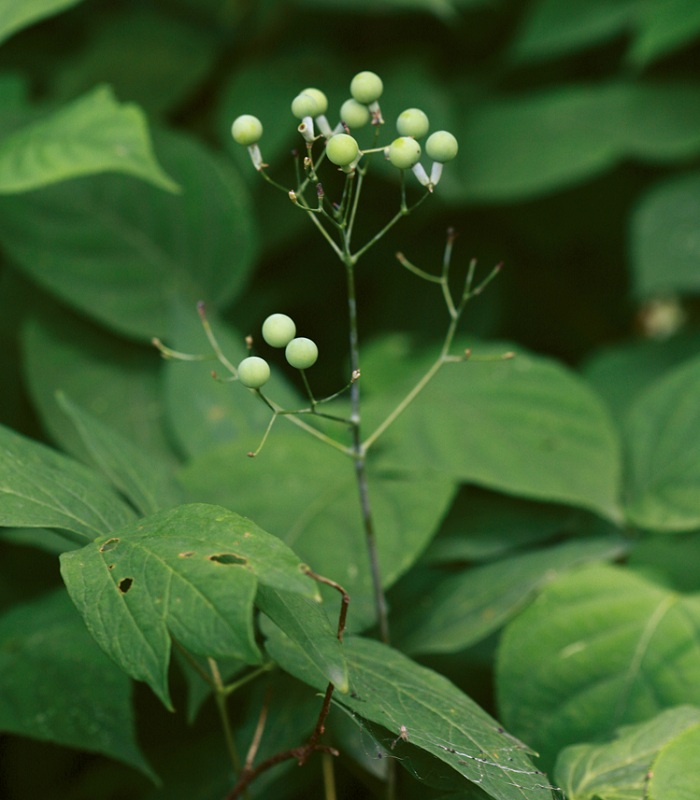
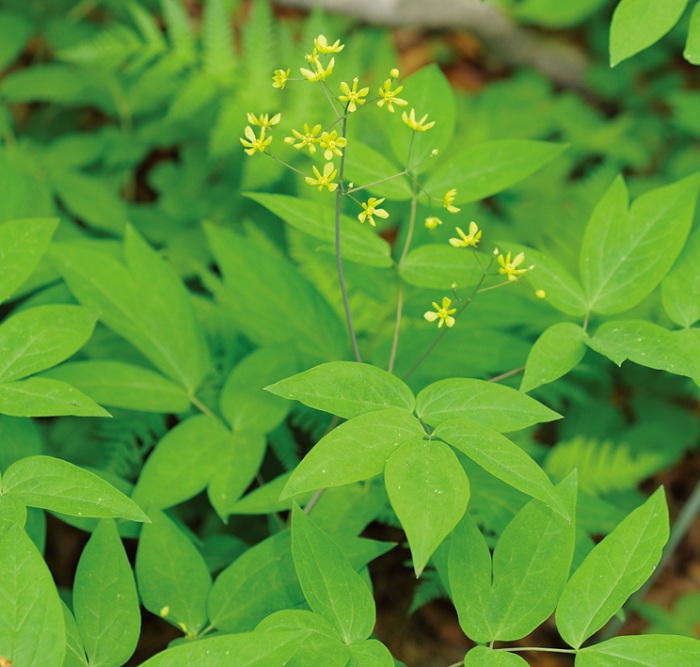

Herbs & Flowers
Name: 꿩의다리아재비, 가락풀나물 Garakpul namul
Scientific name: Caulophyllum robustum Maxim.
Full bloom: July to August
Distribution: mountains nationwide
This perennial herb, known as the blue cohosh, is a distinctive spring wildflower. It grows to 60 centimeters tall. There is no hair along the stem. The underground stems, called rhizomes, are relatively thicker and stretch to the side. The leaves are alternating and grow in threes. It gives rise to light green panicles with a peduncle scape. It is known for its berry-like fruit.
*This series of article about Korea’s insects, trees, mushrooms and herbs & flowers has been made possible through the cooperation of the Korea National Arboretum.
Korea.net publishes a series of articles, “Nature You Meet in the Mountains,” about the peninsula’s mushrooms, insects, trees and herbs & flowers.

Insects
Name: 애매미, Aemaemi
Scientific name: Meimuna opalifera (Walker)
Distribution: Korea, China, Japan
This cicada is about 28 to 35 millimeters long and has a wingspan of about 40 to 48 millimeters. The back of the body is grayish yellow with some markings in green, reddish brown or black. There are some light green areas that stand out on the head and thorax. The underside of most of this species is light green or yellowish brown.
The male is characterized with a relatively longer stridulatory organ, while the female is more slender and has a longer ovipositor. On some of them, the surface is covered in a white powder. There is W-shaped green pattern on the back of the thorax. Also, on some individuals, a reddish brown pattern appears, too.
Ecology: It is usually found in mountains, below 600 meters of altitude. After generating a long series of buzzing and clicking noises, the males fly away to new locations.



Trees
Name: 갈참나무, Galchamnamu
Scientific name: Quercus aliena Blume
Type: deciduous broadleaf tree
Blooming season: May
Bearing season: October
Distribution: mountains nationwide
This oak tree, known as the Oriental white oak, grows to 25 meters tall and has a trunk about 1 meter in diameter, with fissured rough bark. The leaves are ovate or obovate, and range from being obtuse to acute. The leaves develop a sawtooth edge along the sides. A gray pilus is found on the underside of the leaves. The monoecious flowers have drooping male catkins and upright female catkins. The tree bears oval acorns with some hairs at the tip.
The wood is widely used in Asia for building boats and for the flooring in houses.

Mushrooms
Name: 뽕나무버섯 Bbongnamu beoseot
Scientific name: Armillaria mellea (Vahl) P. Kumm.
Type: saprophile spore
Print: white
Edible
This fungus is commonly known as the honey fungus. It grows in clusters from the trunks and stumps of both living and dead trees. It has a smooth cap of 4 to 12 centimeters in diameter. It is convex at first, but gradually becomes flattened. The surface is typically yellow to brown, and has a few dark, hairy scales near the center, arranged radially. The gills are broad and are quite densely arranged. It is white at first, and develops yellowish brown patterns with age. The stipe is 4 to 15 centimeters long and 5 to 15 millimeters in diameter, is yellowish brown to brown, and is fibrillate. The upper part is white while the lower part gets darker with age. There is a broad ring, white to yellow, attached to the upper part of the stipe.
Recently, a plant pathogen that this fungus creates is being used in the artificial cultivation of gastrodia elata, a type of medicinal herb.



Herbs & Flowers
Name: 꿩의다리아재비, 가락풀나물 Garakpul namul
Scientific name: Caulophyllum robustum Maxim.
Full bloom: July to August
Distribution: mountains nationwide
This perennial herb, known as the blue cohosh, is a distinctive spring wildflower. It grows to 60 centimeters tall. There is no hair along the stem. The underground stems, called rhizomes, are relatively thicker and stretch to the side. The leaves are alternating and grow in threes. It gives rise to light green panicles with a peduncle scape. It is known for its berry-like fruit.
*This series of article about Korea’s insects, trees, mushrooms and herbs & flowers has been made possible through the cooperation of the Korea National Arboretum.
